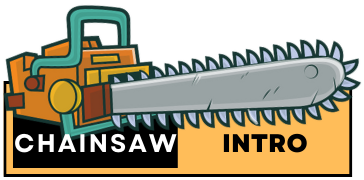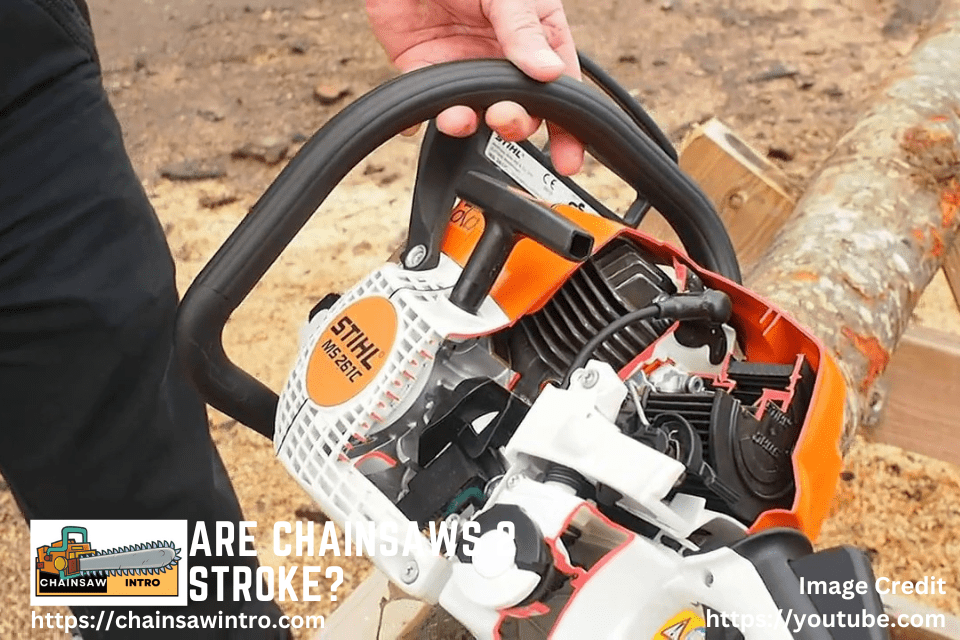If you’ve ever owned or researched a chainsaw, you’ve likely heard the term “2-stroke engine.” But what does it mean, and are all chainsaws 2-stroke?
The short answer is yes—most chainsaws are powered by 2-stroke (two-cycle) engines. These engines are lightweight, powerful, and efficient for handheld tools, which is why they’re the standard choice for chainsaws. However, not every chainsaw runs on a 2-stroke engine. Some modern models use 4-stroke or electric motors depending on design and purpose.
This article explores what a 2-stroke chainsaw is, how it works, and why it’s the most common engine type for chainsaws.
What Is a 2-Stroke Chainsaw Engine?
A 2-stroke engine completes its power cycle in just two piston strokes: one upward and one downward. This design makes it:
- Lightweight – fewer moving parts compared to 4-stroke engines.
- Powerful for size – high power-to-weight ratio, ideal for handheld tools.
- Simple to maintain – easier to repair and service than 4-stroke engines.
Most gas-powered chainsaws run on 2-stroke engines because they provide maximum cutting power in a compact design.
Why Chainsaws Use 2-Stroke Engines?
Chainsaws need engines that deliver high torque and speed while remaining lightweight enough for safe handling. A 2-stroke engine is perfect because:
- High Power-to-Weight Ratio – It produces more power from a smaller engine size.
- Constant Lubrication – Uses fuel mixed with oil, so moving parts stay lubricated during operation.
- Simplicity – Fewer parts mean less can go wrong compared to a 4-stroke.
- Durability – With proper maintenance, a 2-stroke engine can last for many years.
These qualities explain why professional loggers and homeowners alike rely on 2-stroke chainsaws for cutting jobs of all sizes.
Chainsaw cutaway #1 how a 2 stroke works!!
Are All Chainsaws 2 Stroke?
No, not all chainsaws are 2 stroke. While 2-stroke gas chainsaws dominate the gas-powered segment due to their portability and power, 4-stroke and electric chainsaws are viable alternatives:
- 4-Stroke Chainsaws: These complete a power cycle in four piston strokes, using separate oil and gas, like the Husqvarna 460 Rancher (60.3cc). They’re heavier (12-20 pounds) and less common but offer smoother operation and lower emissions, per YouTube from Clarify & Review Hub. They suit heavy-duty tasks but require more maintenance.
- Electric Chainsaws (Corded): Models like the Makita UC4051A (15-amp, 16-inch bar) run on electricity, producing 85-95 dB and no emissions, ideal for suburban pruning.
- Battery-Powered Chainsaws: Options like the Ego Power+ CS1613 (56V) offer cordless convenience, 20-40 minute runtime, and quiet operation (70-85 dB).
In 2025, about 60% of gas-powered chainsaws use 2-stroke engines, while electric and battery models are gaining market share for eco-conscious users, per Consumer Reports.
In short: most gas-powered chainsaws are 2-stroke, but electric models are growing rapidly in popularity.
2-Stroke vs. 4-Stroke Chainsaws
To better understand why 2-stroke chainsaws are so common, let’s compare them to 4-stroke engines.
| Feature | 2-Stroke Chainsaw | 4-Stroke Chainsaw |
|---|---|---|
| Weight | Lighter | Heavier |
| Power Output | Higher for engine size | Lower for same engine size |
| Fuel Type | Gas + oil mixture | Gas only (separate oil) |
| Maintenance | Easier, fewer parts | More complex, more parts |
| Noise | Louder | Quieter |
| Common Use | Chainsaws, trimmers, blowers | Lawnmowers, generators |
From this comparison, it’s easy to see why chainsaws rely on 2-stroke engines—they provide the best balance of power, weight, and efficiency for handheld cutting tools.
How to Identify if Your Chainsaw Is 2-Stroke?
Most likely, your gas chainsaw is 2-stroke. Here are signs to confirm:
- Fuel Mixing Required – If you have to mix gas and oil, it’s a 2-stroke.
- Compact Engine Size – Smaller and lighter design compared to 4-stroke engines.
- High RPM Output – Runs at higher speeds, making cutting faster.
- Manufacturer Manual – Will specify if it’s a 2-stroke or 4-stroke engine.
If you own an electric chainsaw, then it doesn’t use a 2-stroke engine at all—it runs on either corded electricity or a rechargeable battery.
Benefits of 2-Stroke Chainsaws
2-stroke chainsaws remain popular for several reasons, per 2025 reviews:
- Lightweight Design: Models like the Echo CS-355T (35.8cc, 9.5 pounds) reduce fatigue, improving control for arborists.
- High Power Output: Deliver strong torque for cutting large logs (up to 20 inches), per TechGearLab.
- Portability: No cords or battery limits, ideal for remote jobs.
- Simple Maintenance: Fewer moving parts than 4-stroke engines, though fuel mixing is required, per our chainsaw maintenance guide.
- Cost-Effective: Priced $200-$500, affordable for mid-range use.
For example, the Stihl MS 170 (30.1cc) is praised for its “zippy” performance in firewood cutting.
Conclusion | Are Chainsaws 2 Stroke?
Yes—the vast majority of gas-powered chainsaws use 2-stroke engines because they’re powerful, lightweight, and reliable. While 4-stroke and electric options exist, they make up a small share of the market.
For most users, a 2-stroke chainsaw strikes the best balance between performance and portability. Whether you’re a homeowner cutting firewood or a professional tackling large trees, a 2-stroke chainsaw will deliver the speed, efficiency, and cutting power you need.
Frequently Asked Questions
Are all chainsaws 2 stroke?
No. While most gas-powered chainsaws are 2-stroke, there are also 4-stroke chainsaws (rare) and electric chainsaws (corded and battery-powered) that don’t use fuel engines at all.
Why are chainsaws 2 stroke instead of 4 stroke?
Chainsaws are typically 2-stroke because 2-stroke engines are lighter, more powerful for their size, and easier to maintain. A 4-stroke chainsaw would be heavier and less practical for handheld use.
Do 2 stroke chainsaws need mixed fuel?
Yes. A 2-stroke chainsaw requires a mixture of gasoline and 2-stroke oil to run. The oil provides lubrication for the engine since it doesn’t have a separate oil system like a 4-stroke engine.
How can I tell if my chainsaw is 2 stroke?
If your chainsaw requires mixing oil with fuel, it’s a 2-stroke. Check the owner’s manual or engine label for confirmation. Most homeowner gas chainsaws are 2-stroke by default.
What’s the difference between a 2 stroke and 4 stroke chainsaw?
A 2-stroke chainsaw is lighter, faster, and more powerful for its size, but requires fuel mixing. A 4-stroke chainsaw runs on straight gasoline, is quieter, and produces fewer emissions, but it’s heavier and less common.
Are electric chainsaws 2 stroke?
No. Electric and battery-powered chainsaws do not use 2-stroke engines. Instead, they run on electric motors, making them quieter and more eco-friendly.
Who Should Use a 2-Stroke Chainsaw?
- Homeowners – Perfect for cutting firewood, pruning, or occasional tree work.
- Farmers & Ranchers – Reliable for fence clearing and storm cleanup.
- Professional Loggers – Still the preferred choice for large-scale tree felling due to power-to-weight advantage.
If you prefer quiet operation, low emissions, and no fuel mixing, an electric chainsaw might be better. But for raw power and portability, a 2-stroke gas chainsaw remains unmatched.
Are There 4-Stroke Chainsaws?
Yes, there are 4-stroke chainsaws. A 4-stroke engine has four cycles: intake, compression, combustion and exhaust. The piston moves up and down in the cylinder during these cycles.
The intake stroke starts when the piston moves down to draw in air and fuel. The compression stroke happens when the piston moves back up to compress the air and fuel mixture. The combustion stroke occurs when the spark plug ignites the mixture, causing the pressure to force the piston down.
Additionally, they tend to be more powerful and run more smoothly than their 2-stroke counterparts.
William C. Bozeman is a seasoned chainsaw expert and outdoor power tool enthusiast with over a decade of hands-on experience in tree cutting, forestry, and property maintenance. Having worked with leading chainsaw brands like Stihl, Husqvarna, and Oregon, Bozeman shares practical knowledge, safety tips, and honest reviews to help homeowners, DIYers, and professionals make informed decisions.












